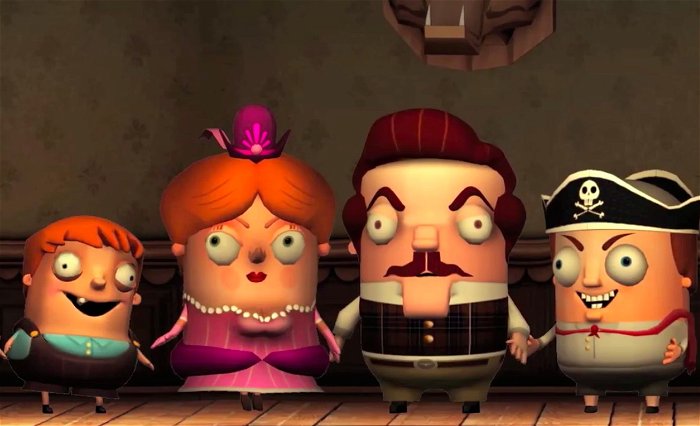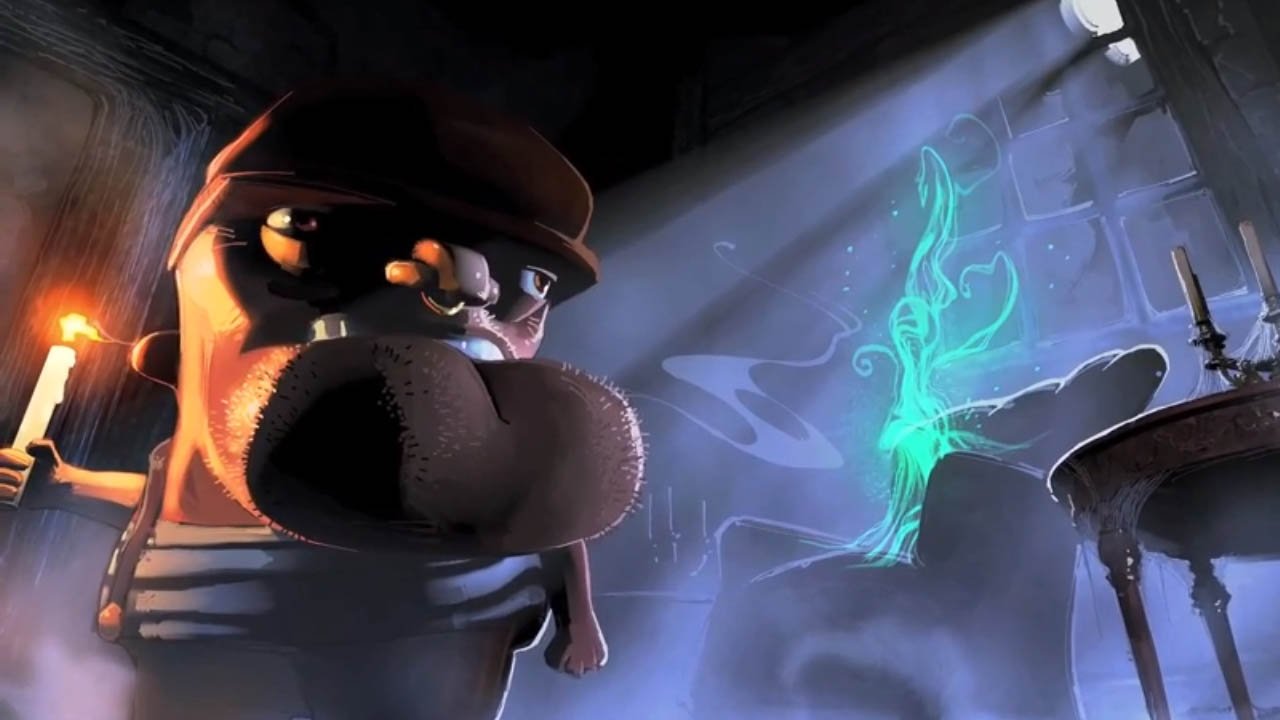I’ve never been a huge fan of Neil Gaiman, but I do think he’s an extremely talented writer. He’s imaginative, draws excellent characters, and is great at making the fantastic worlds he dreams up feel intimate and real. This last point, I think, is what has given him such a devoted readership. Whether in comics or novels, Gaiman is capable of not only dreaming up strange versions of our world, populated by creatures out of myth, but also allowing his audience to feel like they’ve entered into these places alongside ordinary people. It’s a smart choice that allows readers to sink into his work, losing themselves in the fiction he so effectively conjures. Gaimain’s first foray into videogames, Wayward Manor, should have used the interactive medium to highlight this talent, but the author’s collaboration with developer The Odd Gentlemen is too shallow to ever feel like much more than a diversion.

Wayward Manor’s premise isn’t the source of this issue. The game casts players as a ghost haunting a New England mansion’s attic. When the Budd family moves into the house, disturbing the peace it previously enjoyed, the spirit decides to start kicking them out, floor by floor. This involves scaring the occupants of each room on a given storey. Once the intruders have been sufficiently freaked out, the ghost regains control of its full powers and can summon a furniture-filled whirlwind that ends the level. Controlling the poltergeist haunting a sprawling house sounds like a lot of fun, but Wayward Manor’s gameplay is too simple to take advantage of this idea. Scaring the characters involves monitoring their movement patterns and bothering them by solving basic puzzles involving object interaction. In one instance the Manor’s maid, Dagmara, continually travels from statue to statue, dusting away cobwebs. The player can click on the statue to dirty it up again and make Dagmara return, frightening her along the way by touching a glass bottle balanced on an overhead rafter so that it falls down onto her. In another room Mildred Budd—the matriarch of the family—can be manipulated by luring her to dressing chambers and clicking on dolls that vomit onto her new outfit. Repeatedly ruining Mildred’s dress—or frustrating Dagmara by harassing her with new messes—will eventually end the level. It’s all extremely simple stuff where the solution to a given puzzle can be figured out almost immediately or, failing logic, can be brute-forced by simply clicking every interactive object until a favourable result occurs. Although each of the game’s characters has their own behaviour patterns, the puzzle-solving stays largely the same: observe them for a moment, move objects around, continue onto the next level.
“I have a feeling that even [Gaiman’s] most devoted fans will be disappointed with the experience.”
These dull gameplay sequences would be less of an issue if Wayward Manor made good on its promise of an engaging storyline and creative audiovisual style. Unfortunately, the narrative is confined to a handful of extremely brief and largely forgettable cutscenes—the only time outside of scraps of in-game text that Gaiman’s prose is even featured. The characters populating the mansion have decent enough designs, but Wayward Manor’s visuals are too muddy and low resolution to ever appreciate them much. This problem is tied into the fact that the game has obviously been designed with tablet platforms in mind. The PC version I played for review ran in a letterboxed window that cut off text at times—despite being set to the proper full-screen monitor resolution. The keyboard is also ignored as an input method, meaning that the player has to rely on the poorly rendered, blurry text options to even back out to the main menu. While these are minor enough issues, the numerous crashes and glitches that required restarting levels (and, a few times, the game itself) are more serious. Wayward Manor was obviously designed to be played as a mobile game, as made clear from its gameplay design and interface. There’s nothing wrong with this approach, of course. But the technical issues plaguing the desktop version of the game are severe enough to call into question the point of releasing it on the platform at all. Even if these problems were solved, though, the game would still be far from perfect.

Wayward Manor is going to attract attention because it’s a game written by Neil Gaiman, but I have a feeling that even the author’s most devoted fans will be disappointed with the experience. Rather than capitalize on Gaiman’s ability to pull audiences into his imagination, the game is content to skim along the surface of the author’s vision. And when the strengths of its celebrity writer are nowhere in evidence, Wayward Manor offers little more than an unsatisfying puzzle game with a platform release that suffers from substantial technical problems.





